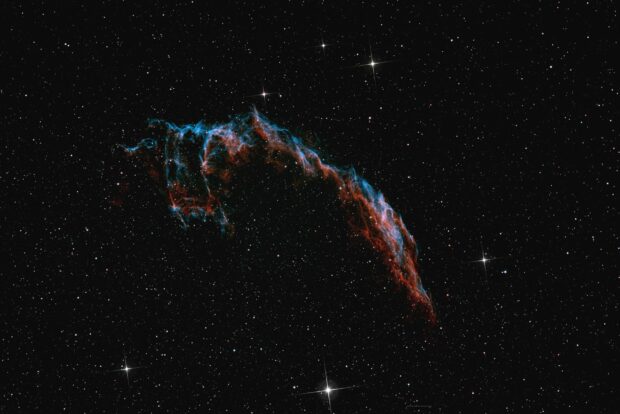 The summer sky is full of fascinating star clusters and nebulae. But they are all surpassed in size, complexity, and beauty by the Cirrus Nebula. This mystical web stretches over more than six full moon diameters. This impressive object is found in the constellation of Swan. It was discovered by William Herschel in 1784. The Cirrus Nebula (also called the Veil Nebula) is a supernova remnant whose brightest parts have been cataloged as NGC 6960, NGC 6992, and NGC 6995. A supernova remnant is an emission nebula formed by a supernova, which is the explosive end of the life cycle of a massive star. In this process, a supernova produces a supersonic shock front that ionizes interstellar matter, causing it to glow.
The summer sky is full of fascinating star clusters and nebulae. But they are all surpassed in size, complexity, and beauty by the Cirrus Nebula. This mystical web stretches over more than six full moon diameters. This impressive object is found in the constellation of Swan. It was discovered by William Herschel in 1784. The Cirrus Nebula (also called the Veil Nebula) is a supernova remnant whose brightest parts have been cataloged as NGC 6960, NGC 6992, and NGC 6995. A supernova remnant is an emission nebula formed by a supernova, which is the explosive end of the life cycle of a massive star. In this process, a supernova produces a supersonic shock front that ionizes interstellar matter, causing it to glow.
After the past summer months with only a few dark night hours it is finally possible again to photograph the beauties of our fascinating universe. The Cirrus Nebula is probably one of the most visited regions in the summer sky and can be photographed well even with small telescopes. My image shows the western part of the Cirrus Nebula, which is about 1500 light years away, and the eastern part with its witch hand. The green-blue structures in the nebula come from the ionized oxygen and the orange-red structures from the Hα emission of hydrogen.
Last clear night I had the opportunity to photograph this beautiful nebula with my small 5 inch reflecting telescope and a CMOS camera. After 30 frames a/180 sec.= 1.5 hours exposure time per frame and using a bandpass filter in front of the camera I was fascinated by the large extent, the clear structures and the colorfulness of the filaments which stood out fantastically against the sky background. I used a Skywatcher PDS Newton telescope with 130mm aperture and a focal length of 650 mm, a CMOS color camera type ZWO ASI 2600MC Pro Color and an Optolong 2″ L-eXtreme narrow band nebula filter.
Text and images: Ralf Schmidt
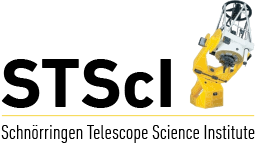

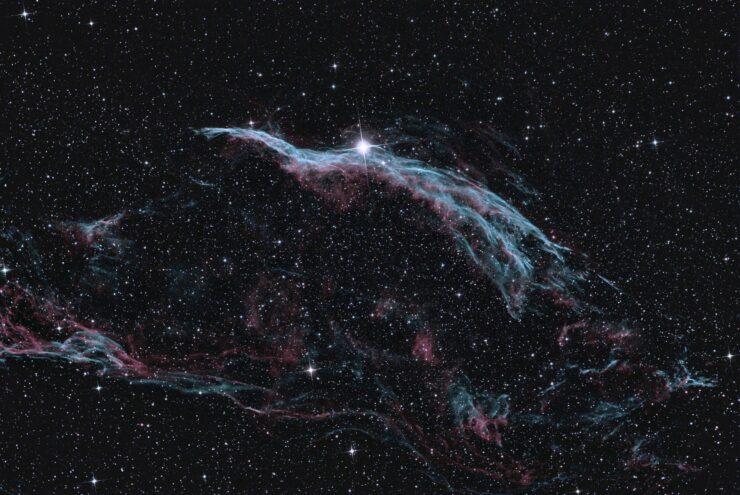
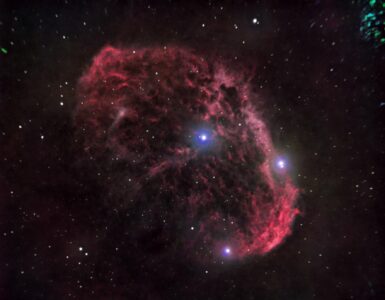
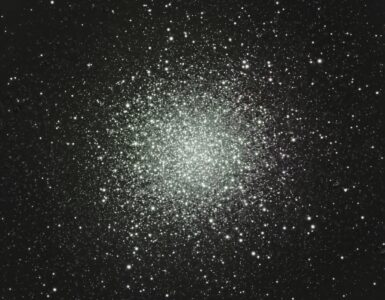
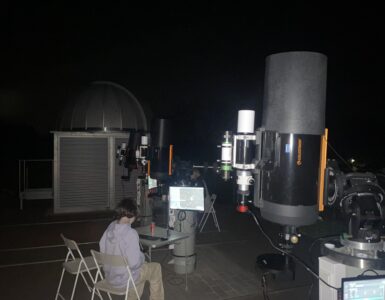
Add comment